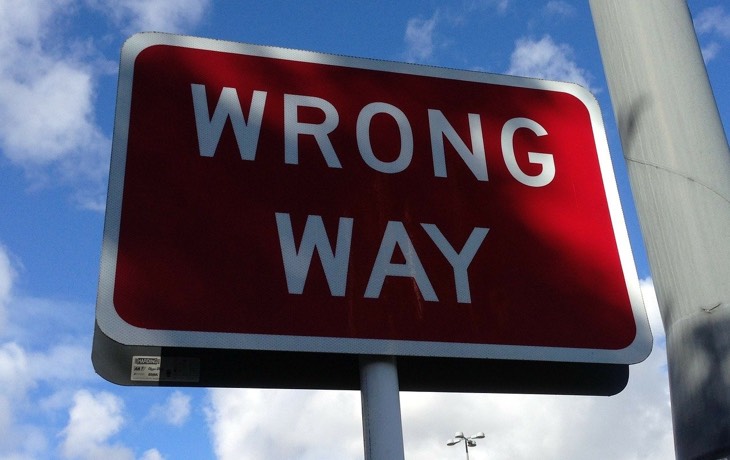There’s a growing chorus of calls to immediately re-open the economy, all of them based on a variant of the following argument: the economic devastation caused by the lockdowns is far worse than the damage caused by the virus’s sub-1 percent fatality rate. Here’s an example from investor Michael J. Burry, made famous by his prescient call on the 2008 housing crisis as chronicled in the book and movie “The Big Short”:
https://twitter.com/michaeljburry/status/1241963119133331456
Some versions of this argument are outright mercenary, premised as they are on the claim that a few hundred thousand deaths of the elderly and vulnerable are a small price to pay for a thriving economy. Others appeal to altruism by first pointing out that economic downturns are a cause of increased deaths by themselves (true), and then arguing that there will probably be more deaths from the economic damage than from the virus itself.
But whatever form this argument takes, it is always wrong for the same reason: it’s based on a wildly incorrect understanding of COVID-19’s case fatality rate (CFR).
The argument that we can and should risk the lives of roughly 0.2% of the population to save the economy belies COVID-19’s CFR in two critical, dangerous ways.
First, the fatality rate swings wildly based on the properties of the country that the virus hits. Specifically, it goes up and down with the average health and makeup of the country’s population (old, young, smoker, obese, health, etc.) and on the capacity of the country’s healthcare system to treat a massive, sudden spike in respiratory illnesses.
Second, the early optimistic suggestions by many experts and press outlets that the coronavirus’s CFR would surely settle at below one percent (0.5% was a popular guesstimate) once all the mild and asymptomatic cases were discovered and accounted for have turned out to be wrong. There is absolutely no record of a representative patient cohort anywhere in the world that has run its course and has a CFR of less than 1%.
CFR estimation is very complex, as we discussed all the way back in early February, so let’s walk through in more detail the problems with the “sub-one-percent CFR” claims that are driving so much of the current push to re-open the economy before the lockdowns have had a chance to work.
About 1.3% is the lowest that a COVID-19 CFR gets in a typical population
We have now had the opportunity to follow a number of individual outbreaks with through a complete cycle — from the initial infections, through the discovery and documentation of most of the cases, to the final resolution (recovery or death) of the infected — and CFR numbers below 1% are scarcely to be seen.
South Korea has had perhaps the world’s best testing program in the main ramp-up phase of a now-contained local epidemic, and its crude CFR has settled at around 1.9%. Germany has been another noted performer, and its crude CFR is also about 1.9%. The Diamond Princess cohort had about 100% ascertainment (almost everyone on the ship got tested, including many asymptomatic people) and ideal care (every case was treated as a high priority in a first-world hospital with ample capacity), and also had a CFR of about 1.7%.
So we’re just not seeing the hoped-for settling of the CFR below one percent, and it’s looking more likely that we never will. Note that this pattern of a rising CFR (vs. the expected drop) was also true of SARS-CoV-2’s predecessor, SARS. The 2003 SARS outbreak started with CFR estimates of about two percent and actually went up to 11 percent by the time the outbreak had run its course.
An overwhelmed healthcare system can put CFR in the high single digits
Even more sobering is the news from places where the virus has not yet infected a significant percentage of the population but has nonetheless overwhelmed the healthcare system (what we call a “Level 4” scenario in our framework).
Italy continues to run at a crude CFR of over 10%, Spain and the UK and the Netherlands are at about 10%, France is around 9%, and Iran, New York City, and Seattle are all around 6% and 7%. These numbers are certainly inflated by continuing ascertainment problems to some extent, but are nevertheless almost certainly higher than we have seen in areas where hospital capacity is adequate.
It’s clear that Level 4 clusters elsewhere in the world are following the pattern of Hubei province compared to the rest of China, and experiencing higher CFRs than areas which prevent their outbreaks from overwhelming hospitals and thus going above Level 3.
We don’t yet know how high the CFR can go in a worst-case scenario
Right now, all the verifiable CFR numbers from higher-ascertainment cohorts that have run their courses, even in the hardest hit areas, are significantly below the 11% CFR of SARS.
The ones that approximate the CFR of SARS, like Spain and Italy, probably still have a significant number of mild or asymptomatic cases yet to be uncovered (these would cause the fatality rate to drop). However, we’ve never seen a cluster of COVID-19 run completely unchecked through a double-digit percentage of a population, and we don’t know what would happen if the vast majority of those patients couldn’t get even rudimentary medical care.
We can guess at this, however, by looking at the distribution of symptoms.
In high-ascertainment cohorts like South Korea and the Diamond Princess, the percentage of serious cases by various definitions and criteria ranging from those requiring hospitalization to those requiring intubation seems to vary between about 5% and 20%.
Unless the majority of those who were “serious” by the loosest definitions would outright die without expert care, even a Level 5 COVID-19 outbreak, while it might approach the CFR SARS attained in the harder-hit locations, would not exceed it.
COVID-19’s death toll is bigger than just COVID-19 deaths
Another important thing to remember is that once an epidemic overwhelms the healthcare system, deaths from all other causes go through the roof as well.
Heart attacks, car crashes, construction accidents, kitchen injuries, strokes, and every other form of non-COVID-19 emergency doesn’t get the attention it would ordinarily get, and frail, elderly, and sick people—as well as sufferers of chronic diseases like cancer, dementia, and heart failure—simply don’t get the care they need on a regular basis.
In Hubei province, estimates are that the excess mortality during the crisis was about 15 times the number of officially acknowledged COVID-19 deaths, and while some portion of these were unacknowledged COVID-19 deaths, as we reported at the time, many others were surely not.
Excess mortality numbers from Italy have come in at about 5-6 times the explicit COVID-19 death toll, and Italy is unlikely to be lying about COVID-19 statistics in a major way. New York has also seen a similar spike in all-causes mortality.
But because the excess mortality effect stems from medical neglect and social shutdown, it may not increase that much if the virus spreads through a large chunk of the population. This is what was observed in the 1918 flu pandemic.
Even some experts still aren’t being sober about COVID-19’s fatality rate
But a lot of people aren’t assimilating the above information. We often see them seriously understate how deadly COVID-19 is and, more importantly, can be if we relax the mitigation measures that are working to flatten the curve in places like Seattle, Italy, and New York.
By far the most galling recent example of undue CFR optimism was an analysis Dr. Birx presented at the White House on Tuesday.
Billed as a “worst-case” scenario for the USA and widely circulated since, it predicted 2.2 million deaths in the USA in the event of a nationwide Big Burn (i.e. where we end the lockdowns and just let the virus burn through the population, or if whatever measures we adopted in the long run were a complete failure). This number was arrived at by multiplying together the population of the United States, a notional 67% infection rate, and a CFR of 1%.
But attaining a CFR better than the best-managed outbreaks, where the healthcare system remained intact the whole time, in a nationwide Big Burn is probably not even a realistic possibility, and definitely not a worst case.
Any analysis which wants to be a worst-case or even typical representation of uncontrolled spread needs to use CFR numbers derived from or projected for those situations, not the rosiest numbers from countries that have kept the virus under control and given a hospital bed and ventilator to everyone who needs one. It’s astonishing that scientists, let alone such prominent ones, are operating this way.
Conclusion: we can’t just reopen everything & let the virus rage
If we re-open our economy too early and we get an uncontrolled outbreak, we may very well see a fatality rate that creeps up towards the high single digits and kills millions. In such a scenario, the economy would likely collapse as people just stopped showing up for work. And in such a disorderly economic collapse scenario, parts of our critical infrastructure may collapse, as well.
We already have closures of meat processing plants that will soon impact our food supply, so if millions are dying will people risk their lives by showing up for work at our food processing and distribution centers? Will there still be supermarket workers to unload trucks and stock shelves?
Would the workers at power plants and municipal water facilities keep showing up, or would they stay home out of fear or to care for sick family members?
So if we reopen too early, and the virus spins out of control in a way that no country has yet let it do, then we risk a breakdown of the critical parts of our society and economy that keep people fed and the lights on.
Of course, if we reopen too late, we also risk a similar collapse, as massive unemployment leaves people without the ability to buy whatever groceries make it to the shelves. Surging unemployment rolls and widespread precarity — even straight-up hunger for many families with maxed out credit cards and no cash cushion — could bring about a massive loss of social cohesion that sours into violence and chaos.
So we cannot just re-open and let the virus rage, nor can we stay closed indefinitely. Both those paths lead to chaos and collapse. Our only choice is to come up with a way to thread the needle between doing too much and too little. We’ve already covered one proposed plan for that and will cover more as they’re published in the coming weeks.


You are reporting the comment """ by on